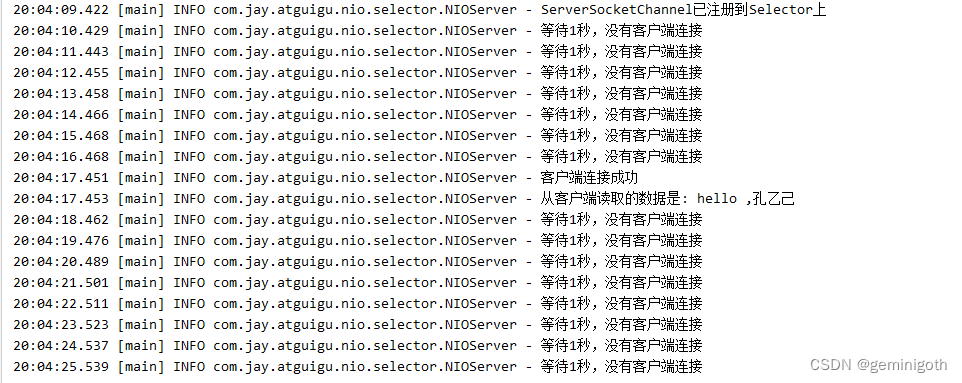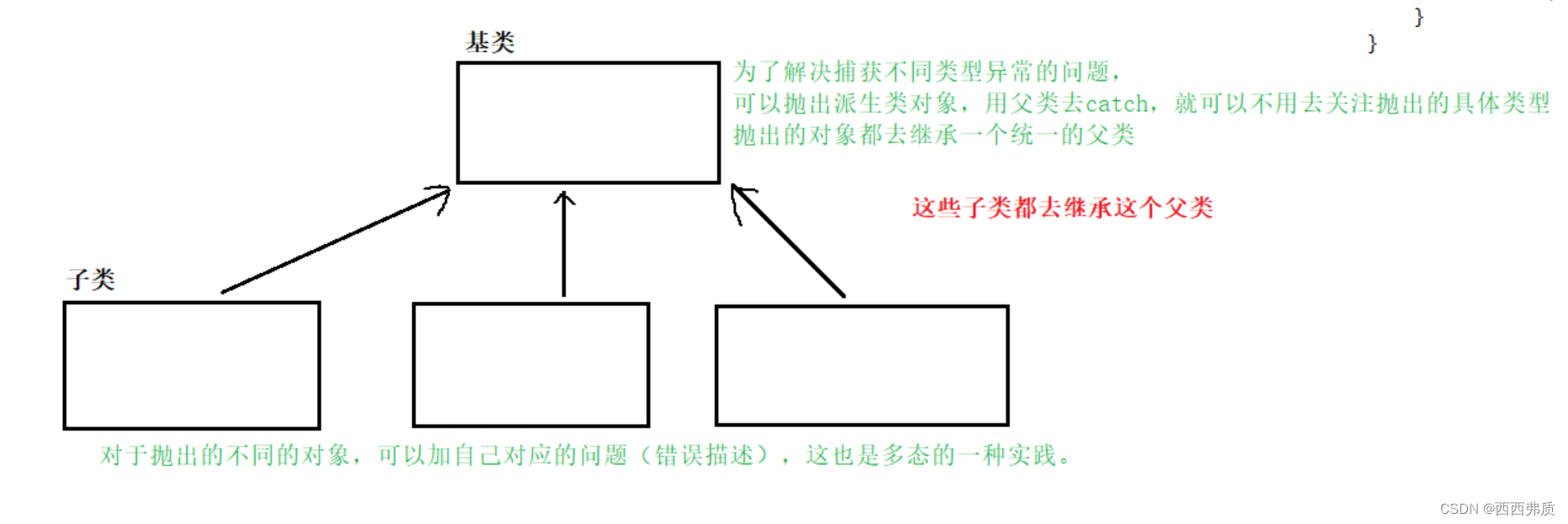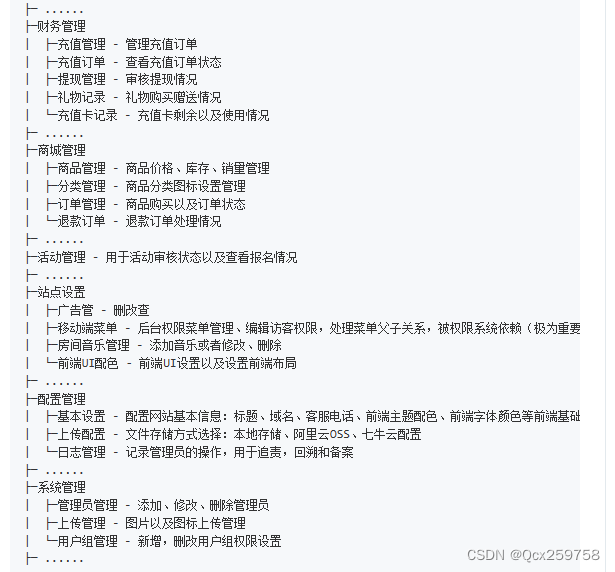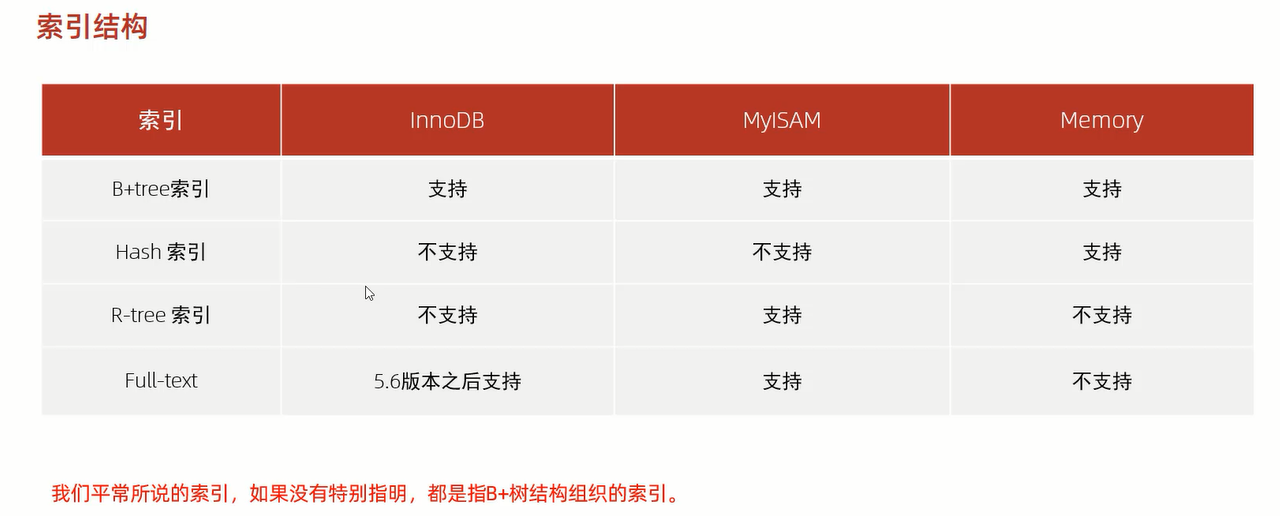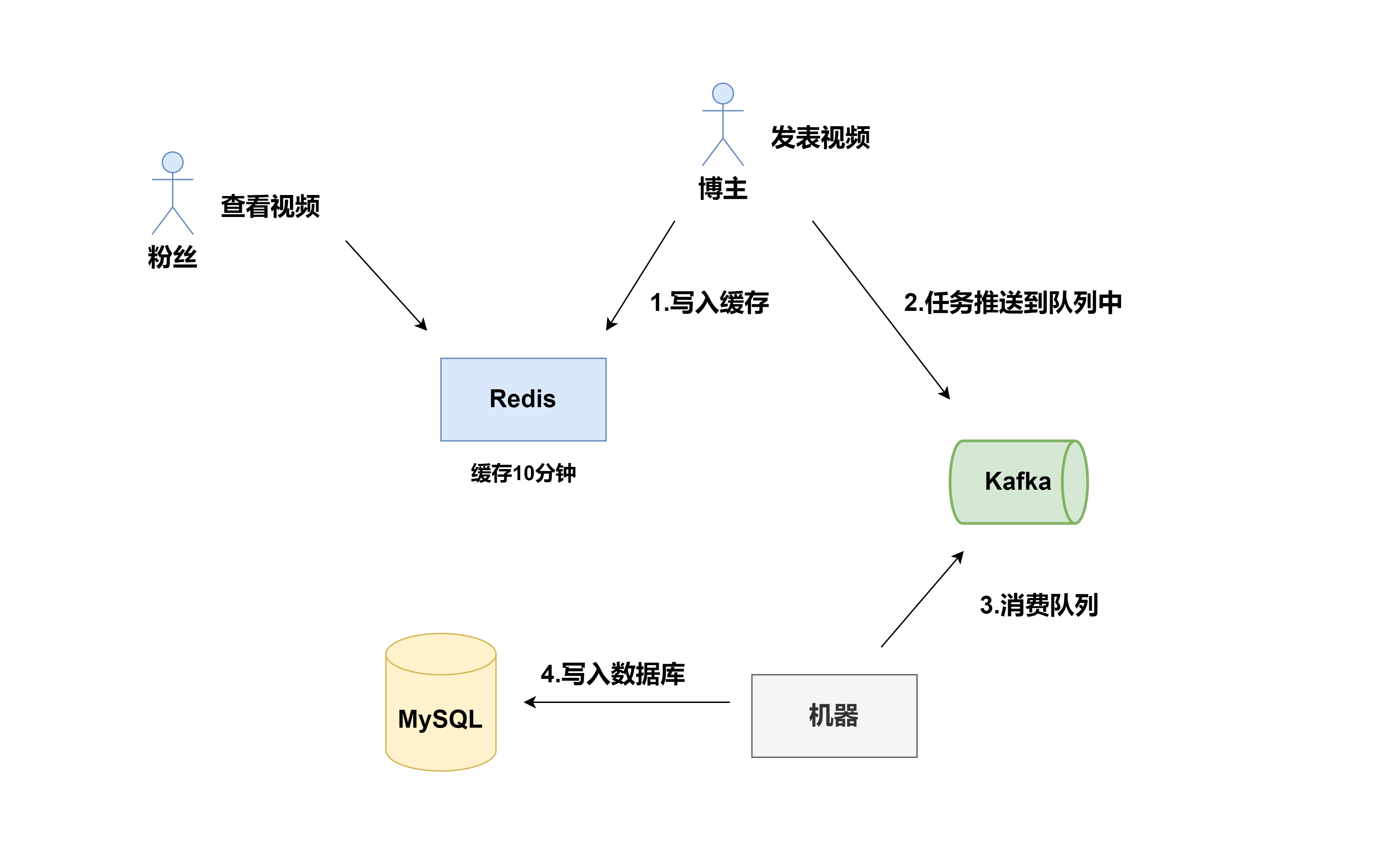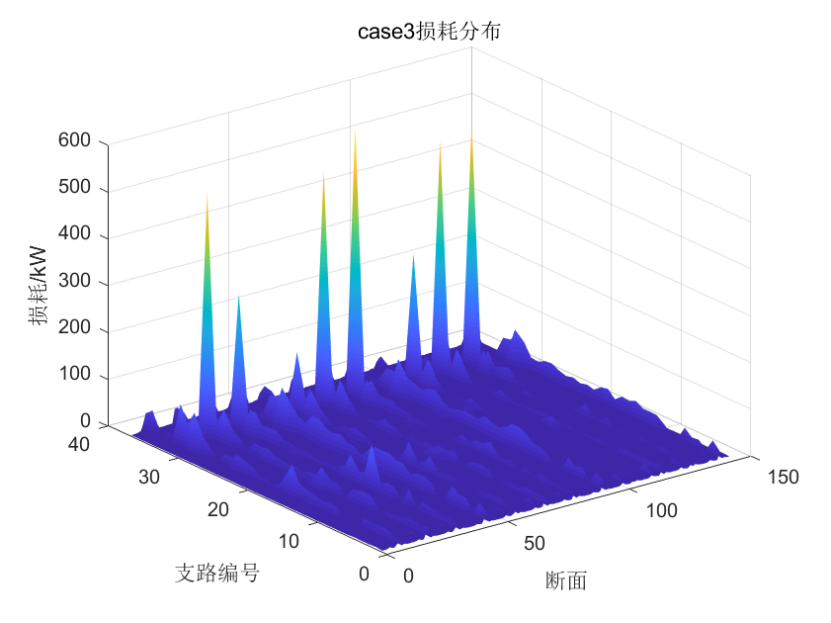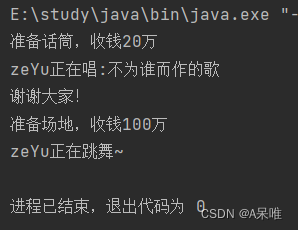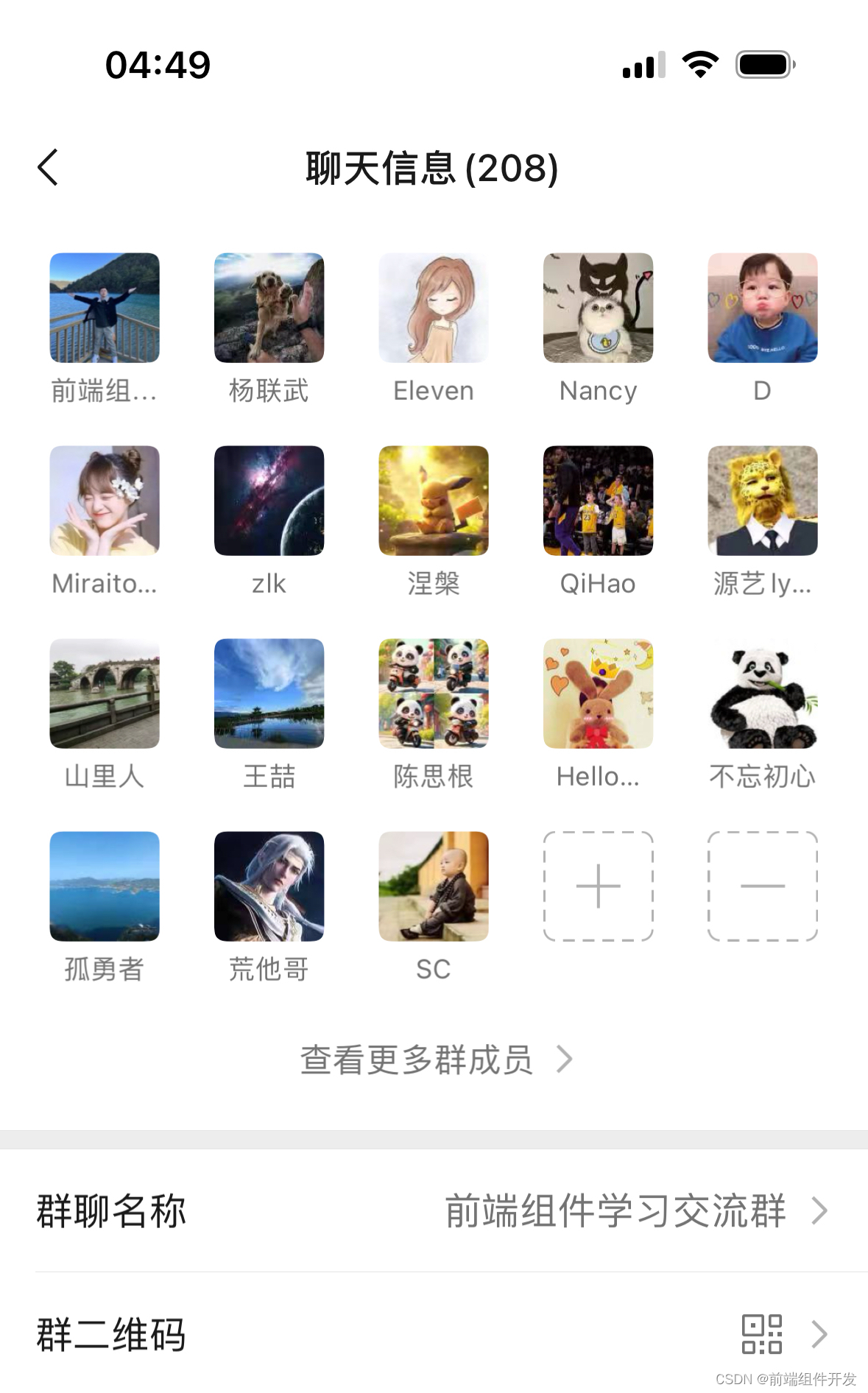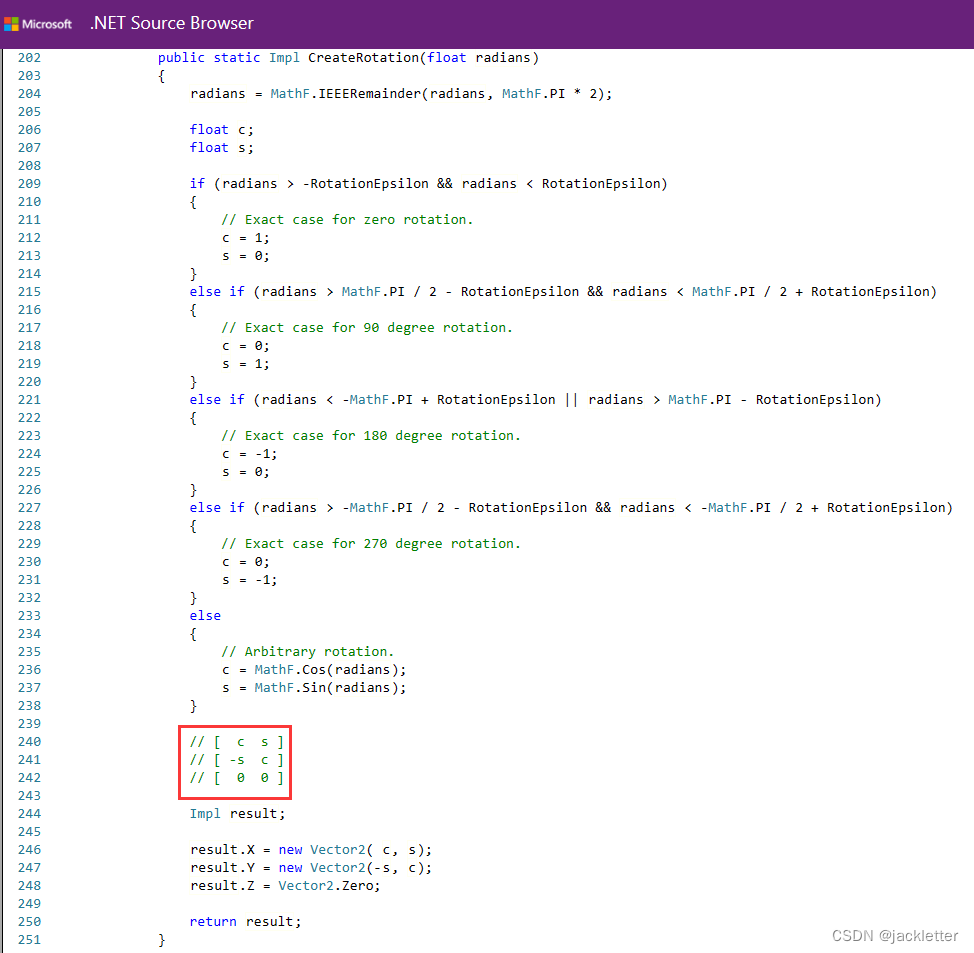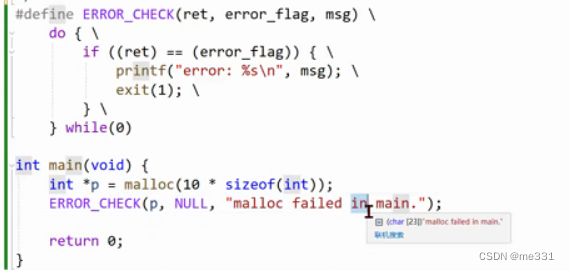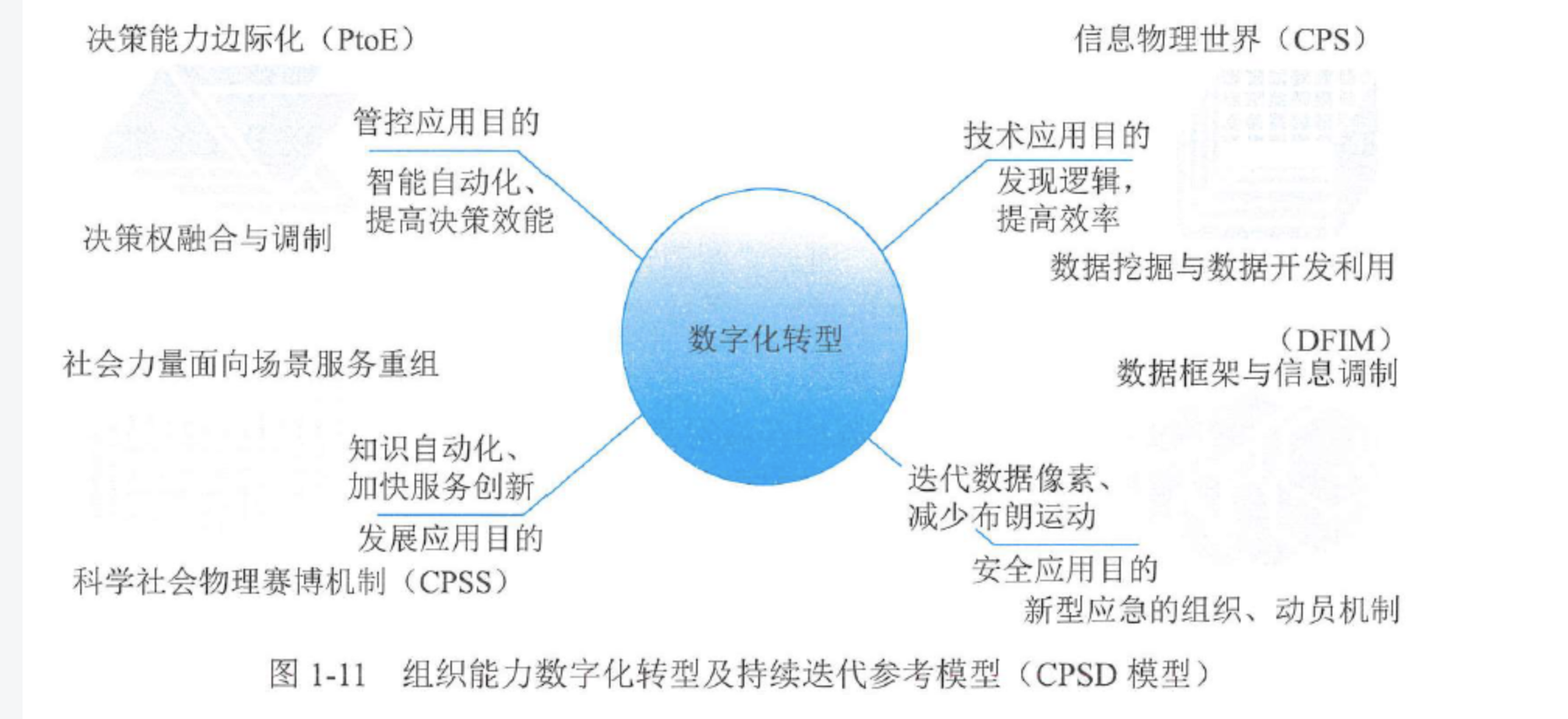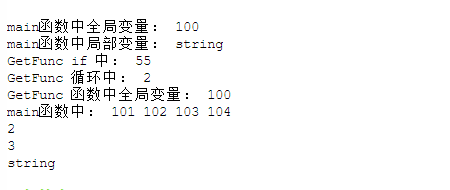1 BIO 实战代码
@Slf4j
public class BIOServer {
public static void main(String[] args) throws IOException {
//1 创建线程池
ExecutorService threadPool = Executors.newCachedThreadPool();
//2 创建ServerSocket
ServerSocket serverSocket = new ServerSocket(8000);
log.info("服务器已启动成功");
//3 监听,等待客户端连接
while(true){
log.info("线程id:{}",Thread.currentThread().getId());
log.info("等待连接...");
//4 客户端连接后,创建一个线程,与客户端通信
final Socket socket = serverSocket.accept();
threadPool.execute(new Runnable() {
@Override
public void run() {
handler(socket);
}
});
}
}
//编写一个handler方法,与客户端通信
public static void handler(Socket socket){
try {
log.info("线程id:{}",Thread.currentThread().getId());
//创建一个byte[]数组
byte[] bytes = new byte[1023];
//通过socket获取输入流
InputStream inputStream = socket.getInputStream();
//循环读取客户端发送的消息
while(true){
int read = inputStream.read(bytes);
if(read != -1){
System.out.println(new String(bytes,0,read));
}else{
break;
}
}
}catch (Exception e){
e.printStackTrace();
}finally {
try {
log.info("关闭与客户端的连接");
socket.close();
} catch (IOException e) {
throw new RuntimeException(e);
}
}
}
}运行结果
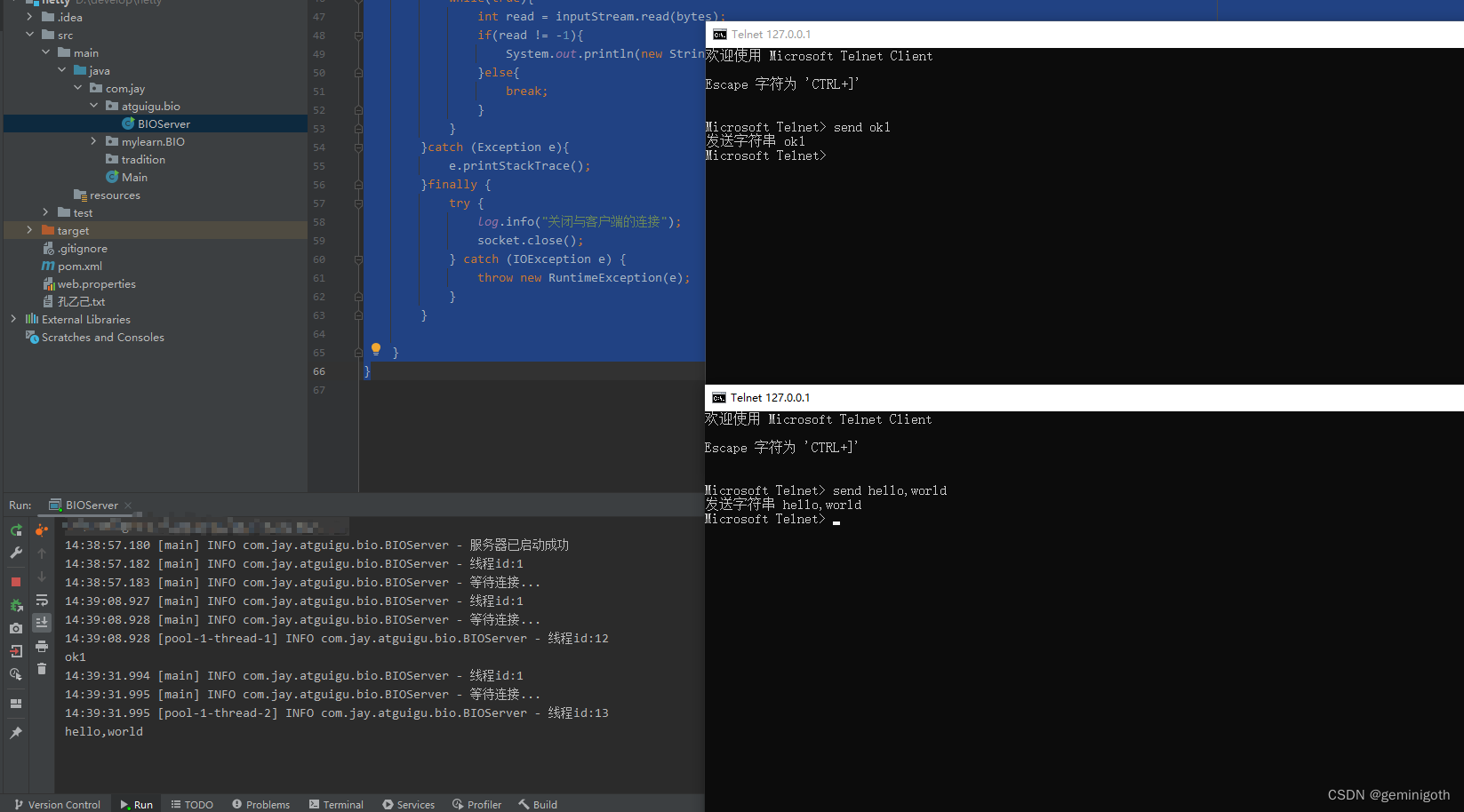
2 NIO实战
2.1 Buffer实战
@Slf4j public class BasicBuffer { public static void main(String[] args) { //1 创建一个Buffer IntBuffer buffer = IntBuffer.allocate(10); //2 往Buffer存储数据 for (int i = 0; i < buffer.capacity(); i++) { buffer.put(i * 2); } //3 Buffer读写切换 buffer.flip(); //4 Buffer 读数据 while(buffer.hasRemaining()){ log.info("{}",buffer.get()); } } }
2.2 FileChannel实战
使用NIO的FileChannel和ByteBuffer,把一段文字写入到指定的文件中。
//把文字写入到指定文件中 public class FileChannelWrite{ public static void main(String[] args) throws IOException { //1 指定文字 String str = "hello,孔乙己"; //2 创建一个输出流 FileOutputStream fileOutputStream = new FileOutputStream("D:\\develop\\java-base\\test\\test01.txt"); //3 通过输出流创建FileChannel java.nio.channels.FileChannel fileChannel = fileOutputStream.getChannel(); //4 创建一个缓冲区 ByteBuffer buffer = ByteBuffer.allocate(1024); //5 把文字放入缓冲区buffer中 buffer.put(str.getBytes()); //6 对buffer进行翻转 buffer.flip(); //7 把buffer的数据写入到FileChannel fileChannel.write(buffer); //8 关闭流 fileOutputStream.close(); } }
使用NIO的FileChannel和Bytebuffer,读取指定文件中的内容,并打印到控制台
@Slf4j public class FileChannelRead { public static void main(String[] args) throws IOException { //1 创建输入流 File file = new File("D:\\develop\\java-base\\test\\test01.txt"); FileInputStream fileInputStream = new FileInputStream(file); //2 通过输入流创建FileChannel FileChannel fileChannel = fileInputStream.getChannel(); //3 创建缓冲区 ByteBuffer buffer = ByteBuffer.allocate((int) file.length()); //4 把通道的数据读取到缓冲区 fileChannel.read(buffer); //5 把bytebuffer 转成 string log.info("文件的内容是: {}",new String(buffer.array())); //6 关闭输入流 fileInputStream.close(); } }
使用一个Buffer,FileChannel和read/write方法,完成文件的拷贝 .
public class FileChannelCopy {
public static void main(String[] args) throws IOException {
FileInputStream fileInputStream = new FileInputStream("D:\\develop\\java-base\\test\\source.txt");
FileChannel inputChannel = fileInputStream.getChannel();
FileOutputStream fileOutputStream = new FileOutputStream("D:\\develop\\java-base\\test\\target.txt");
FileChannel outChannel = fileOutputStream.getChannel();
ByteBuffer buffer = ByteBuffer.allocate(1024);
while (true){
buffer.clear();
int read = inputChannel.read(buffer);
if(read == -1){
break;
}
buffer.flip();
outChannel.write(buffer);
}
fileInputStream.close();
fileOutputStream.close();
}
}
使用transferFrom方法拷贝文件
public class FileChannelCopy01 {
public static void main(String[] args) throws IOException {
FileInputStream fileInputStream = new FileInputStream("D:\\develop\\java-base\\test\\source.png");
FileOutputStream fileOutputStream = new FileOutputStream("D:\\develop\\java-base\\test\\dest.png");
FileChannel inChannel = fileInputStream.getChannel();
FileChannel outChannel = fileOutputStream.getChannel();
outChannel.transferFrom(inChannel,0,inChannel.size());
fileInputStream.close();
fileOutputStream.close();
}
}
2.3 MappedByteBufer
MappedByteBufer 可以让文件直接在内存(堆外内存)修改,操作系统不需要再拷贝一次
//原来的内容是:hello,孔乙己
//修改后的内容是:HelLo,孔乙己
public class MappedByteBuffer {
public static void main(String[] args) throws IOException {
RandomAccessFile randomAccessFile = new RandomAccessFile("D:\\develop\\java-base\\test\\test01.txt", "rw");
FileChannel channel = randomAccessFile.getChannel();
java.nio.MappedByteBuffer map = channel.map(FileChannel.MapMode.READ_WRITE, 0, 5);
map.put(0,(byte) 'H');
map.put(3,(byte) 'L');
randomAccessFile.close();
}
}
2.4 ServerSocketChannel和SocketChannel
@Slf4j
public class ServerSocketChannelAndSocketChannel {
public static void main(String[] args) throws IOException {
//1 使用ServerSocketChannel和SocketChannel 网络
ServerSocketChannel serverSocketChannel = ServerSocketChannel.open();
InetSocketAddress address = new InetSocketAddress(8000);
//2 绑定端口到socket,并启动
serverSocketChannel.socket().bind(address);
//3 创建 ByteBuffer数组
ByteBuffer[] buffers = new ByteBuffer[2];
buffers[0] = ByteBuffer.allocate(5);
buffers[1] = ByteBuffer.allocate(3);
//4 等待客户端连接
SocketChannel socketChannel = serverSocketChannel.accept();
int messageLength = 8;//假定从客户端接收到8个字节
//5 循环读取
while(true){
int byteRead = 0;
while(byteRead < messageLength){
long read = socketChannel.read(buffers);
byteRead += read;
log.info("byteRead = ,{}",byteRead);
//使用流打印,查看当前的这个buffer的position和limit
Arrays.asList(buffers).stream().
map(buffer -> "position = " +
buffer.position() +
",limit = " + buffer.limit()
).forEach(System.out::println);
}
// 6 将所有的buffer进行翻转
Arrays.asList(buffers).forEach(buffer -> buffer.flip());
// 将数据读取到客户端
long byteWrite = 0;
while(byteWrite < messageLength){
long l = socketChannel.write(buffers);
byteWrite += l;
}
//将所有的buffer进行翻转
Arrays.asList(buffers).forEach(buffer ->{buffer.clear();
});
log.info("byteRead = ,{},byteWrite = {},messageLength = {}",byteRead,byteWrite,messageLength);
}
}
}
2.5 使用NIO开发服务端和客户端
NIOServer.java
@Slf4j public class NIOServer { public static void main(String[] args) throws Exception{ //1 创建ServerSocketChannel ServerSocketChannel serverSocketChannel = ServerSocketChannel.open(); //2 创建Selector对象 Selector selector = Selector.open(); //3 绑定端口 8000,在服务器监听 serverSocketChannel.socket().bind(new InetSocketAddress(8000)); //4 ServerSocketChannel设置为非阻塞 serverSocketChannel.configureBlocking(false); //5 把ServerSocketChannel的OP_ACCEPT注册到selector serverSocketChannel.register(selector, SelectionKey.OP_ACCEPT); log.info("ServerSocketChannel已注册到Selector上"); // 6 循环,等待客户端连接 while(true){ //7 等待一秒,如果没有事件发生,就返回 if(selector.select(1000) == 0){ log.info("等待1秒,没有客户端连接"); continue; } //8 如果有事件发生,就获取selectedKyes,返回关注事件的集合 Set<SelectionKey> selectededKeys = selector.selectedKeys(); Iterator<SelectionKey> keyIterator = selectededKeys.iterator(); //9 遍历selectedKeys集合,获取事件类型 while(keyIterator.hasNext()){ SelectionKey key = keyIterator.next(); if(key.isAcceptable()){ log.info("客户端连接成功"); //10_1 如果是OP_ACCEPT事件,证明有新的客户端连接,为该客户端创建一个SocketChannel SocketChannel socketChannel = serverSocketChannel.accept(); socketChannel.configureBlocking(false); //10_1_1 将SocketChannel注册到selector上,事件类型是OP_READ,并绑定一个缓冲区 socketChannel.register(selector,SelectionKey.OP_READ, ByteBuffer.allocate(1024)); } if(key.isReadable()){ //10_2 如果是OP_READ事件,通过selectedKey 反向获取 SocketChannel SocketChannel channel =(SocketChannel) key.channel(); //10_2_1 获取该channel绑定的buffer,并读取 ByteBuffer buffer = (ByteBuffer)key.attachment(); channel.read(buffer); log.info("从客户端读取的数据是: {}",new String(buffer.array())); } //11 移除selectedKey,防止重复操作 keyIterator.remove(); } } } }
NIOClient.java
@Slf4j public class NIOClient { public static void main(String[] args) throws Exception { //1 创建SocketChannel SocketChannel socketChannel = SocketChannel.open(); //2 设置非阻塞模式 socketChannel.configureBlocking(false); //3 提供服务器的ip和端口 InetSocketAddress address = new InetSocketAddress("127.0.0.1", 8000); //4 连接服务器 if(!socketChannel.connect(address)){ // 4_1 连接失败 while(!socketChannel.finishConnect()){ log.info("连接需要时间,此时客户端不会阻塞,可以做其他工作。。。"); } } //4_2 连接成功,发送数据 String str = "hello ,孔乙己"; ByteBuffer buffer = ByteBuffer.wrap(str.getBytes()); socketChannel.write(buffer); System.in.read(); } }
运行结果:
